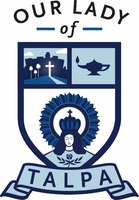Discipline in the Catholic school is considered an aspect of moral guidance and not a form of punishment. The purpose of discipline is to provide a school climate that is conducive to learning and promotes character development and the common good. Each school must publish its discipline policy in its parent/student handbook.
Discipline is maintained in a classroom or school when students work cooperatively with the principal, the teachers, and their classmates towards class and school objectives. However, the legitimate interest of the school extends beyond the school day and school hours.
7-16-21
DISCIPLINE
Catholic schools’ discipline is considered an aspect of moral guidance and not a form of punishment.
The purposes are:
To promote genuine pupil development.
To provide classroom situations conducive to learning.
To learn respect for the rights of others.
To promote character training.
DISCIPLINE PROCEDURES
Each classroom has its own Four-Step discipline process. The goal is to have children know the consequences of their behavior.
STEP ONE: The student will be sent to the office with a Referral Form. The top half will be completed by the adult who is sending the child to the office.
The student will meet with the Principal.
Together they will complete the bottom half of the referral form.
The student will inform a parent of the incident by phone or note.
The student will be held accountable for the plan developed.
The Principal will inform the referring staff member of action taken.
STEP TWO: If a student is sent to the principal a second time within a two month
period.
The student will again meet with the principal.
The student will again notify a parent by phone or note.
A conference with the teacher, parent, student and principal will be scheduled.
A contract will be drawn up listing actions that will be taken by each participant in the conference.
A date to review the contract will be determined.
The discipline cycle will be reviewed with the parent.
A recommendation may be made to have the family visit with a counselor or other specialist.
STEP THREE: If a student is sent to the principal a third time within a two month
period or in extreme cases when the principal determines the
seriousness of the action warrants starting at Step Three.
The student meets with the principal and vice principal(s).
The student notifies the parent that a suspension of up to three days has been earned. The length, type, in-school or out-of-school, will be determined by the principal.
A conference will be held with a parent, teacher(s), student and principal to write a plan with a measurement for progress to assist the student in developing self-control.
All school work missed during the period of suspension must be completed before the student rejoins the class.
A probationary time period to monitor and review progress will be set once the student is ready to return to class.
Note: Step three can be repeated as long as a student is able to demonstrate that progress is being made and is willing to contribute to a positive learning environment.
When little or no change is evident and school personnel have exhausted all available means to affect change, the student will move to Step Four of the cycle.
STEP FOUR: The principal will recommend an alternative school.
The principal and vice principal will meet with parent(s) or guardian.
The decision to terminate a student rests with the principal.
Serious infractions such as possession of drugs or weapons or severe physical or moral misconduct could result in an immediate move to Step four of this cycle. The no tolerance clause can be executed at the principal’s discretion.

